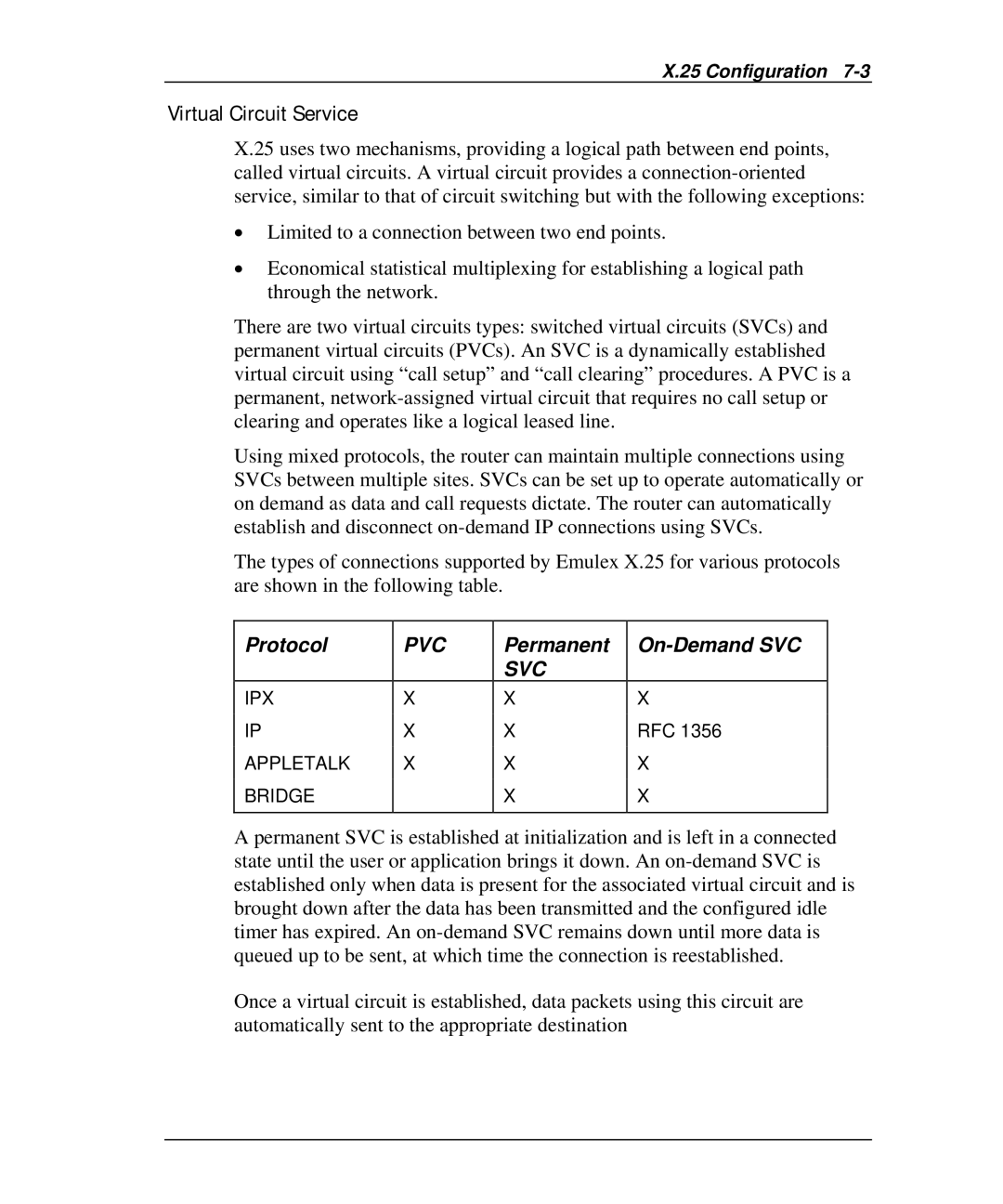
X.25 Configuration
Virtual Circuit Service
X.25 uses two mechanisms, providing a logical path between end points, called virtual circuits. A virtual circuit provides a
•Limited to a connection between two end points.
•Economical statistical multiplexing for establishing a logical path through the network.
There are two virtual circuits types: switched virtual circuits (SVCs) and permanent virtual circuits (PVCs). An SVC is a dynamically established virtual circuit using “call setup” and “call clearing” procedures. A PVC is a permanent,
Using mixed protocols, the router can maintain multiple connections using SVCs between multiple sites. SVCs can be set up to operate automatically or on demand as data and call requests dictate. The router can automatically establish and disconnect
The types of connections supported by Emulex X.25 for various protocols are shown in the following table.
Protocol | PVC | Permanent |
|
|
| SVC |
|
IPX | X | X | X |
IP | X | X | RFC 1356 |
APPLETALK | X | X | X |
BRIDGE |
| X | X |
|
|
|
|
A permanent SVC is established at initialization and is left in a connected state until the user or application brings it down. An
Once a virtual circuit is established, data packets using this circuit are automatically sent to the appropriate destination
